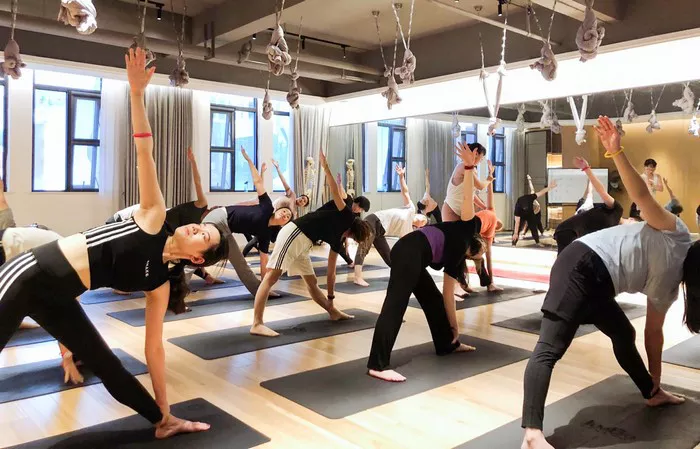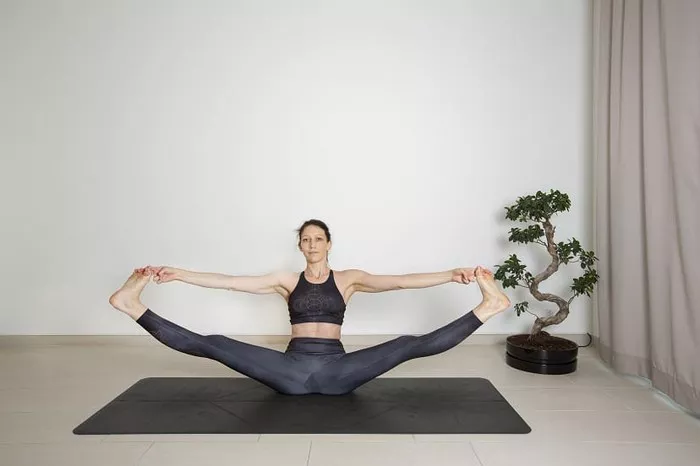Hot yoga, also known as Bikram yoga, has gained immense popularity in recent years due to its myriad of physical and mental health benefits. The practice involves performing yoga postures in a room heated to a high temperature, typically around 95-105 degrees Fahrenheit. While the heat intensifies the yoga experience and aids in detoxification, it also presents a unique challenge when it comes to choosing the right attire. For men, finding suitable clothing that balances comfort, flexibility, and breathability is essential to optimize performance and enhance the overall hot yoga experience.
In this comprehensive guide, we delve into the various factors to consider when selecting attire for hot yoga sessions, explore the best fabric options, and offer practical tips for maximizing comfort and performance on the mat.
Factors to Consider When Choosing Attire for Hot Yoga
1. Breathability: Given the intense heat and humidity of hot yoga studios, breathability is paramount. Opt for lightweight, moisture-wicking fabrics that allow air circulation and facilitate sweat evaporation to keep you cool and comfortable throughout your practice.
2. Flexibility: Hot yoga involves dynamic movements and stretches, requiring attire that moves with your body without restricting movement. Look for garments with ample stretch and flexibility to ensure unrestricted range of motion during poses and transitions.
3. Moisture Management: Sweating profusely is a hallmark of hot yoga sessions, making moisture management a critical consideration. Choose clothing that effectively wicks moisture away from the skin, preventing the buildup of sweat and enhancing comfort and performance.
4. Durability: Hot yoga can be physically demanding, placing considerable strain on clothing. Invest in high-quality, durable attire that can withstand frequent washing and the rigors of intense practice without losing shape or elasticity.
5. Comfort: Comfort is key to enjoying your hot yoga practice to the fullest. Select attire that feels soft against the skin, minimizes chafing, and offers a snug yet non-restrictive fit for optimal comfort throughout your session.
Best Fabric Options for Hot Yoga
1. Nylon: Nylon is a popular choice for hot yoga attire due to its exceptional moisture-wicking properties and lightweight feel. It efficiently pulls sweat away from the skin, keeping you dry and comfortable even during the most intense sequences.
2. Polyester: Polyester is another synthetic fabric known for its moisture-wicking capabilities and quick-drying nature. It is durable, resistant to shrinking, and maintains its shape well, making it an excellent choice for hot yoga apparel that can withstand repeated washings.
3. Spandex: Spandex, also known as Lycra or elastane, is prized for its unparalleled stretch and recovery properties. It provides exceptional flexibility and freedom of movement, allowing you to move seamlessly through yoga poses without feeling restricted.
4. Bamboo: Bamboo fabric is gaining popularity in the yoga community for its sustainability and breathability. It is naturally antibacterial, hypoallergenic, and moisture-wicking, making it an eco-friendly and comfortable choice for hot yoga attire.
5. Mesh: Mesh panels or inserts are often incorporated into yoga clothing to enhance breathability and ventilation. These strategic design features allow for increased airflow, keeping you cool and comfortable in the heat of the studio.
Practical Tips for Men’s Hot Yoga Attire
1. Choose Lightweight, Form-Fitting Tops: Opt for form-fitting tank tops or T-shirts made from breathable, moisture-wicking fabrics. Avoid loose or baggy tops that can become cumbersome and hinder your movements during yoga poses.
2. Select Moisture-Wicking Bottoms: Choose moisture-wicking shorts or leggings that offer ample stretch and breathability. Look for designs with flatlock seams to minimize chafing and irritation, especially in areas prone to friction.
3. Consider Compression Shorts: Compression shorts provide support and stability to the muscles, reducing fatigue and enhancing performance during hot yoga sessions. They also help prevent chafing and discomfort, particularly when performing seated or reclining poses.
4. Invest in Sweat-Resistant Accessories: Consider investing in sweat-resistant accessories such as headbands or wristbands to keep sweat out of your eyes and off your hands during your practice. Opt for moisture-wicking materials that effectively absorb sweat and prevent slippage.
5. Layer Wisely for Warm-Up and Cool-Down: During the warm-up and cool-down phases of your hot yoga practice, layering can help regulate body temperature and prevent overheating or chilling. Start with lightweight, moisture-wicking garments that provide coverage and warmth without trapping excess heat. As your body heats up, you can gradually remove layers to maintain a comfortable temperature. Conversely, layering up during the cool-down phase helps retain warmth and prevent rapid cooling of the body after intense physical activity.
6. Focus on Footwear: In hot yoga, practitioners typically perform barefoot to improve balance, stability, and connection with the mat. However, if you prefer additional support or traction, consider wearing grip socks or minimalist footwear with thin, flexible soles that allow for natural movement and sensory feedback.
7. Bring a Change of Clothes: After a vigorous hot yoga session, it’s essential to change into fresh, dry clothing to prevent discomfort and potential health issues such as skin irritation or fungal infections. Pack a clean set of clothes, including underwear and socks, to change into post-practice.
8. Hydrate Adequately: Staying hydrated is crucial when practicing hot yoga, as the combination of high temperatures and intense physical exertion can lead to significant fluid loss through sweat. Drink plenty of water before, during, and after your practice to maintain hydration levels and replenish electrolytes lost through sweating.
9. Practice Proper Hygiene: Hot yoga studios provide a conducive environment for the growth and spread of bacteria and fungi, making hygiene practices paramount. Shower before and after your practice, use a clean towel to wipe down your mat and equipment, and avoid sharing towels or personal items with others to minimize the risk of infections.
10. Listen to Your Body: Lastly, listen to your body and honor its signals during your hot yoga practice. Pay attention to how you feel physically and mentally, and modify or take breaks as needed to prevent overexertion or injury. Remember that yoga is a personal journey, and it’s essential to practice self-care and self-awareness throughout your journey on the mat.
Conclusion
In conclusion, selecting appropriate attire for hot yoga is essential for optimizing comfort, performance, and overall enjoyment of the practice. By choosing breathable, moisture-wicking fabrics that offer flexibility, durability, and comfort, men can enhance their hot yoga experience and reap the numerous physical and mental benefits it offers. Additionally, incorporating practical tips such as proper hydration, hygiene, and listening to your body can further enhance your hot yoga practice and contribute to a fulfilling and transformative journey on the mat.
Can I take my shirt off at hot yoga?
While policies may vary among hot yoga studios, it’s generally advisable to keep your shirt on during practice. Wearing appropriate attire helps maintain hygiene, prevents slipping on the yoga mat, and fosters a respectful environment for all participants.
Is it bad to not shower after hot yoga?
While showering immediately after hot yoga isn’t mandatory, it’s highly recommended. Hot yoga sessions induce profuse sweating, which can leave sweat, bacteria, and toxins on your skin. Failing to shower afterward may increase the risk of skin irritation, acne, or fungal infections. Showering helps remove sweat and impurities, cools down the body, and promotes post-practice relaxation and rejuvenation.
Do you go barefoot for hot yoga?
Yes, practitioners typically perform hot yoga barefoot. Going barefoot enhances balance, stability, and connection with the yoga mat, allowing for better grip and alignment during poses. Additionally, practicing barefoot strengthens the muscles of the feet and promotes proprioception, the body’s awareness of its position in space.
















